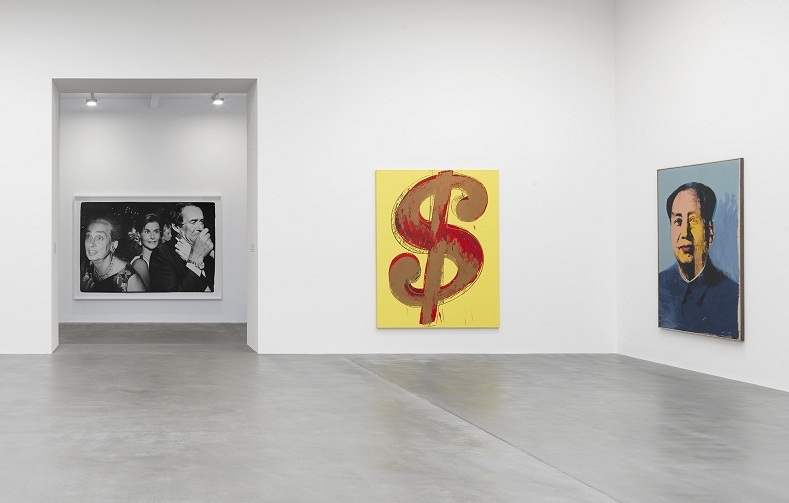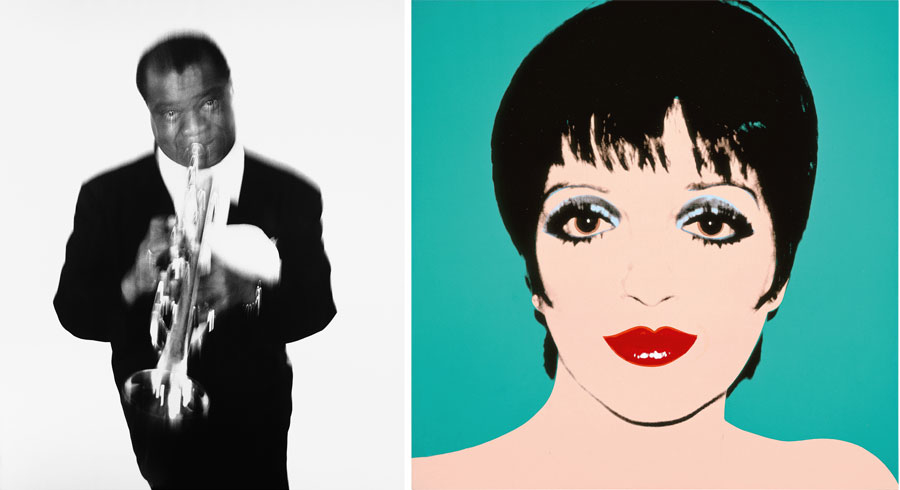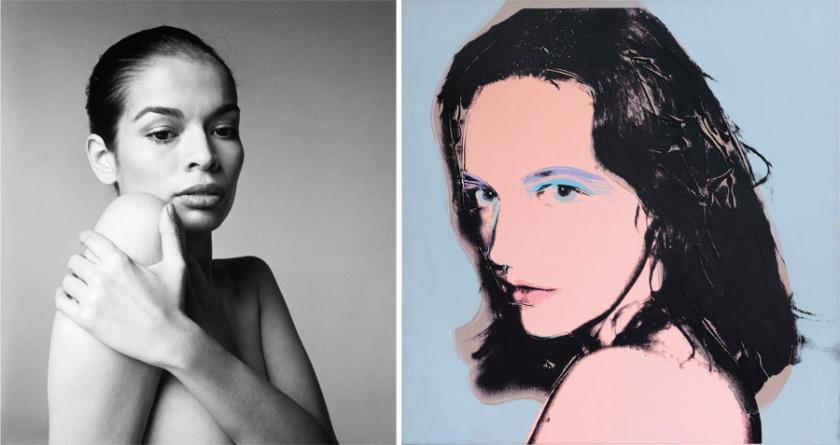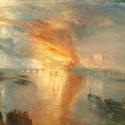It is an inspired pairing: iconic images by the American photographer Richard Avedon (1923-2004) and the painter, printmaker and filmmaker Andy Warhol (1928-1987), almost all of whose mature work was based on the photographic image. They are together in a large exhibition at Gagosian, Britannia Street, itself one of the largest and most elegant commercial art spaces in London, designed by that cultural architectural duo Caruso St John.
The show is also making, if you like, a statement about the market. Photography as a medium has been around since the 1840s, ubiquitous for much of the 20th century and now inescapable, but it is only in the last few decades that its aesthetic and commercial worth – both vintage and contemporary, analogue and digital – has soared ever upwards. Even so it has conventionally remained segregated: significant art galleries have been showing photography regularly but usually not together on the walls with painting (that is true of public museums and galleries, unless scholarly points are being made about connections and influences). Now this separation is eroding substantially in both market and critical terms. This may be because the photography market is booming, fraught though that may be with questions of what makes an authentic photograph (in modern terms, those authorised by the photographer or the estate). Respected galleries and academics have to lead buyers, not to mention viewers, through this new minefield.
Very few are instantly recognisable now, and it is disconcerting how ordinary they look
Warhol started off as an agile draughtsman, adept and highly successful at fashion illustration, and metamorphosed into a genius at communicating the zeitgeist visually: his aphorisms are legion, and he was the court painter to the increasingly frenzied society of America, from presidential assassinations to mega-celebrity. It is fitting that a huge painting of the dollar sign dominates one gallery (Pictured below). He worked in sequences, mimicking the strips of portrait photographs provided by photo booths; notoriously, sometimes the sittings of his millionaire clients were in fact visits to photo booths to provide the raw material, although he also often took photographs to work with of himself and other subjects.
The rest of his imagery was based on classic, iconic photographs from mass and niche media publications, riffing on images of people and personalities so famous (or infamous) that they were universally known simply by one name. Mao! Jackie! Liz! Marilyn! What might Warhol have done with Amy Winehouse? (He also had a profitable sideline in pet portraits, not on view here.) He played with the conventions of photography and his invention of off-kilter colour registration is now both ubiquitous and commonplace.
 In contrast, Richard Avedon’s black and white photographs are carefully composed portraits of people posed directly in his studio, against a dead white background. Most startling is the composite frieze-like portrait, the people almost more than life-size, of Warhol and his entourage, colleagues and fellow artists; shocking, surprising and oddly endearing are the male nudes whose faces are artfully made up. They are curiously and affectingly dignified. Warhol of course is himself dressed, as are others of the group, in the composite Avedon photograph, Andy Warhol and Members of the Factory. A really shocking single portrait is of Warhol himself, his chest bared to show the horrific scars that resulted when he was nearly murdered by an obsessed acquaintance, Valerie Solanas.
In contrast, Richard Avedon’s black and white photographs are carefully composed portraits of people posed directly in his studio, against a dead white background. Most startling is the composite frieze-like portrait, the people almost more than life-size, of Warhol and his entourage, colleagues and fellow artists; shocking, surprising and oddly endearing are the male nudes whose faces are artfully made up. They are curiously and affectingly dignified. Warhol of course is himself dressed, as are others of the group, in the composite Avedon photograph, Andy Warhol and Members of the Factory. A really shocking single portrait is of Warhol himself, his chest bared to show the horrific scars that resulted when he was nearly murdered by an obsessed acquaintance, Valerie Solanas.
Another room is dominated by a sequence of photographs of the powerful, The Family, 1976, marking perhaps in rather ironic fashion the bicentenary of the American Revolution, the portfolio commissioned from Avedon by Rolling Stone. The title is resonant, with its not so subtle hint of the Mafia. Of the 70 or so people portrayed few are women: one is Mrs Rose Kennedy, another Rose Mary Woods (who was Nixon’s secretary); there is Lady Bird Johnson, Katharine Graham, owner of the Washington Post, and the resoundingly named Bella Abzug, in her time an energetic US Congresswoman. The men included presidents past and future, not to mention Henry Kissinger.
They were the people who in the mid-1970s were shaping America: powers in the military, politicians, spies and billionaires, and a handful of activists from César Chavez to trade unionists. And yet just looking at them, could you tell? The men, mostly, are in suits; most look like one’s stereotyped notions of the appearance of middle management. Very few are instantly recognisable now, and it is strikingly disconcerting how ordinary they look. There are no trappings, just mostly men looking businesslike, and very occasionally rather more approachable as a few sling their jackets off. It is, however, as compelling as the kind of meditations on power and prominence in the political and cultural portraits Gerhard Richter deployed in paint which were themselves based on photographs. (PIctured below: Richard Avedon, Louis Armstrong, 1955; Andy Warhol, Liza Minnelli, 1976)
 There are self-portraits by both figures, and both on Marilyn; Avedon on writers and artists – Francis Bacon, Beckett, Ezra Pound, Truman Capote – and a terrifyingly banal double-portrait of the young murderers who were the protagonists of Capote’s In Cold Blood. Both portray the Agnellis. Warhol with Jackie, Liz and Elvis must perforce be at one remove or more; not so with his Keith Haring and Basquiat. He cannot help making his people into decorative objects. Avedon had to have some engagement, with his camera sharing the same space as his subject whether it be Bardot, Charlie Chaplin, or indeed Jackie.
There are self-portraits by both figures, and both on Marilyn; Avedon on writers and artists – Francis Bacon, Beckett, Ezra Pound, Truman Capote – and a terrifyingly banal double-portrait of the young murderers who were the protagonists of Capote’s In Cold Blood. Both portray the Agnellis. Warhol with Jackie, Liz and Elvis must perforce be at one remove or more; not so with his Keith Haring and Basquiat. He cannot help making his people into decorative objects. Avedon had to have some engagement, with his camera sharing the same space as his subject whether it be Bardot, Charlie Chaplin, or indeed Jackie.
This is in a way a scattershot show, and one has less sense of the formidable nature of the achievement of America’s courtier and court jester, Warhol, than of Avedon. It is partly the convention of Warhol’s painted/printed portraits, so unusual, unexpected and original when first seen, but now unavoidably mainstream. On this showing Warhol is an uncomfortably acute observer, personally somewhat withdrawn, and acutely aware of the distancing that celebrity brings. There is a tenderness, though, in his portrayal of his mother, Julia Warhola. So too with Avedon, but there is an empathy that communicates. Avedon’s portrait of Janis Joplin – so transparently warm, energetic that it seems about to burst into song – is vitality personified: a visual anti-depressant. And next to Joplin is Avedon’s 1955 photograph of Satchmo, about to blow his trumpet to see us home.
Gallery below: click on the thumbnails to enlarge
Images paired by Gagosian Gallery. All Richard Avedon artworks © 2016 The Richard Avedon Foundation. All Andy Warhol artworks © 2016 The Andy Warhol Foundation for the Visual Arts, Inc./Artists Rights Society, New York










![SEX MONEY RACE RELIGION [2016] by Gilbert and George. Installation shot of Gilbert & George 21ST CENTURY PICTURES Hayward Gallery](/sites/default/files/styles/thumbnail_125_x_125_/public/mastimages/Gilbert%20%26%20George_%2021ST%20CENTURY%20PICTURES.%20SEX%20MONEY%20RACE%20RELIGION%20%5B2016%5D.%20Photo_%20Mark%20Blower.%20Courtesy%20of%20the%20Gilbert%20%26%20George%20and%20the%20Hayward%20Gallery._0.jpg?itok=3oW-Y84i)




Add comment